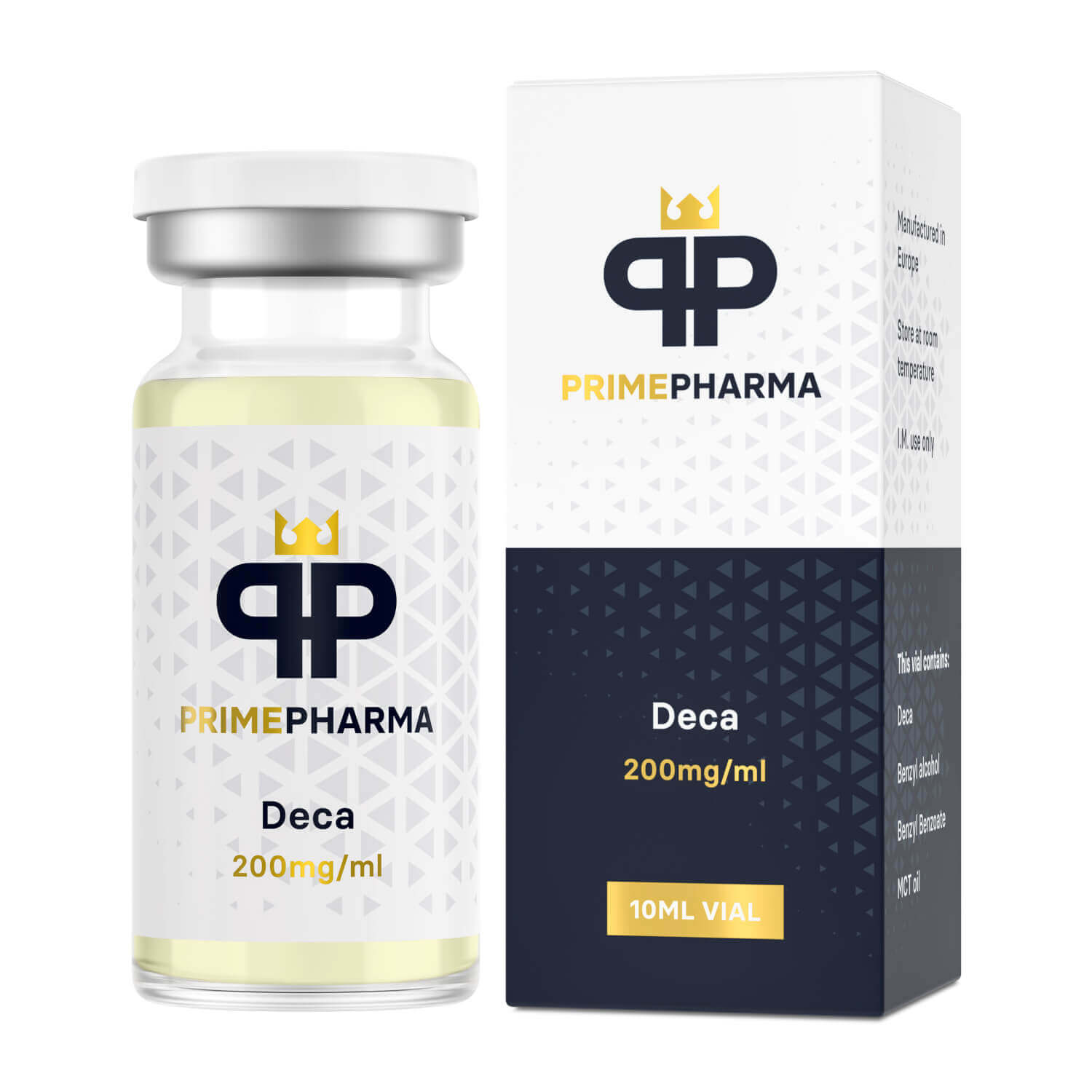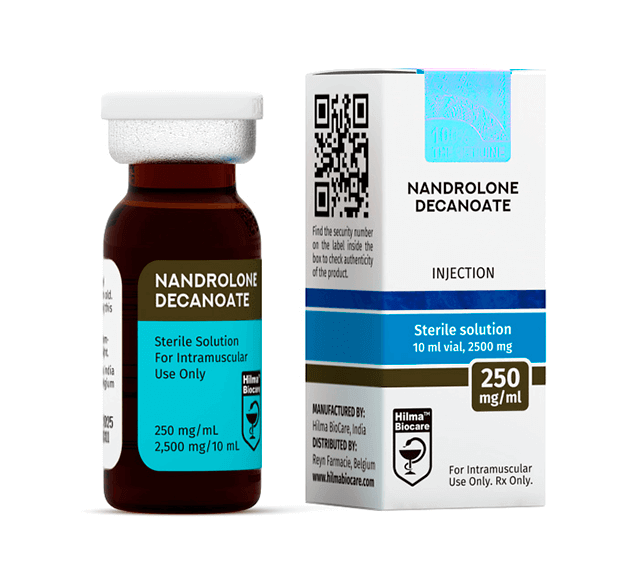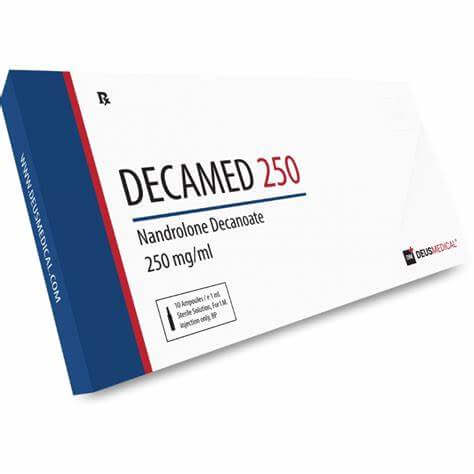
Welcome to the Bible of Nandrolone (Deca Durabolin)

Deca-Durabolin

Nandrolone (Deca Durabolin)
If you’ve ever found yourself curious about the explosive muscle growth that Deca can provide then this website is for you. You will found out the specific benefits of nandrolone administration. We aim to leave no stone unturned in our analysis of this incredibly popular and somewhat notorious anabolic steroid – we’ll explain how it works, where it came from and how it can positively impact your aesthetic appearance and training. Interestingly, this is easily one of the most misunderstood anabolic steroids of all time in that there tends to be widespread disagreement in regards to what it is actually useful for. Typically resigned to being purely a supportive agent as part of a cycle, deca is actually capable of delivering a great deal more than just auxiliary support when used appropriately. By the end of this profile, you will understand its purpose in a more in-depth fashion and have the necessary knowledge needed to administer it with optimum effectiveness.
What Is Deca-Durabolin?
It’s over the course of this section that we fully break down the chemical structure of nandrolone to provide you with adequate understanding of its base functionality and characteristics.
Through your understanding of the intricacies of this compound, you’ll no longer be confused or under any illusion in regards to what it is actually capable of doing for you.
By turning to science; we’ll understand the nature of the “beast” perfectly.

Nandrolone – Chemical Structure, Functions And Traits
The deca durabolin benefits are numerous owing to its unique structure; this is a 19-nor steroid belonging to the same family as trenbolone (perhaps the most powerful anabolic steroid on the market.)
Do not confuse the two compounds though, as they are truly worlds apart.
Whist we won’t go into the specifics of the trenbolone structure here, it features a variety of additional modifications to the base C-19 structure in order to give it a tremendous surge of power.
Where the deca structure differs is that is does not feature quite as many “modifications.” Before we delve further into its characteristics, let’s first discern exactly what a 19-nor steroid is.
Our bodies (and animal bodies) actually produce what’s known as C-19 steroids naturally. They are regarded as being more potent in nature than the C-18 steroids many of us are accustomed to.
C-19 steroids are derivatives of the “precursor” hormone progesterone, which is in many ways the “base” structure on which testosterone and estrogen are built (we’ll discuss this hormone in more detail shortly.)
By observing this table, you’ll be able to see a clear difference between the two “C” steroid types.
 One (the C19) is primarily concerned with creating “structural” and “characteristic” differences in the body i.e the generation of lean muscle tissue and masculine features / spermatogenesis amongst other elements, whereas the other is primarily concerned with sexual function and the development of bones and skeletal tissue.
One (the C19) is primarily concerned with creating “structural” and “characteristic” differences in the body i.e the generation of lean muscle tissue and masculine features / spermatogenesis amongst other elements, whereas the other is primarily concerned with sexual function and the development of bones and skeletal tissue.
As a result, if you’re looking to develop more muscle mass / make your body grow in an optimal anabolic fashion, you really need more C19 activity in order to make that happen.
This is a problem though; the body doesn’t actually produce much C-19 naturally, and a great deal of the C-19 steroids available in our system actually gets converted into a C-18 steroid when they come into contact with the aromatase enzyme.
This takes place through a procedure known as the aromatization process. Usually, the higher the androgenic rating of a steroid, the higher the chances are that aromatization will take place and lead to unwanted estrogenic issues arising.
This is largely related to the amount of “free” testosterone created in the system by the introduction of an exogenous steroid; whilst free testosterone is useful in regards to anabolic / androgenic properties of a positive nature, it also means that there are more “available” testosterone molecules to convert into estrogens. The reason C-19 steroids are named as such is because they feature a 19th carbon position. When they interact with the aromatase enzyme, they lose the 19th carbon position, meaning they turn into C-18 steroids as a result. Testosterone is one such C-19 steroid, and nandrolone emulates its structure in an almost identical fashion (more on that shortly.)
What makes 19-nor steroids like deca so unique is that they do not feature a 19th carbon position whatsoever; this means that they retain the features of a “standard” C-19 steroid (in this instance they closely mimic testosterone) but without being rapidly degraded / converted into estrogen.
As such, their anabolic properties potently exert themselves onto the body in an “undiluted” fashion – it’s worth noting that 19-nor’s do eventually get broken down (into estrogen), but this conversion takes place at a much slower pace and to a lesser extent than would ordinarily occur.
The change in structure of 19-nor compounds means that only roughly 20% of the 19-nor molecules present in the body are actually “fit” for conversion into estrogen.
It’s worth noting that the 19-nor blueprint is in fact nandrolone itself – any other 19-nor steroid is simply a derivative of the base nandrolone structure. All it takes to create nandrolone is the removal of the 19th carbon of a C19 steroid; that’s literally all nandrolone is on a molecular level.
What we’re left with then is a hybrid steroid – something that on paper should technically be a C18 steroid (owing to its lack of a 19th carbon), but it isn’t.
This is because the removal of the 19th carbon acts as a “security blanket” against “easy” estrogen conversion rather than altering the base functions of the steroid in any significant way from an anabolic perspective.
DHT Steroids
DHT steroids are an altogether different steroid type and are usually found amidst effective cutting cycles, but when 19-nor’s successfully make contact with the 5 reductase enzyme, they convert into what’s known as “dihydronandrolone.”
You can easily sum up these two “end result” compounds by saying that one is a derivative of testosterone, whereas the other is a derivative of nandrolone. It’s this derivative form that ultimately provides the base characteristics we benefit from when using deca or trenbolone (although these characteristics vary greatly depending on your compound of choice.)
As a result of the conversion process, we’re left with a steroid that has an androgenic rating of 37, and an anabolic rating of 125. In comparison to testosterone, this is a reduction of 63 in terms of androgenism, and an increase of 25 in terms of anabolism.
As such, you’re going to benefit from the muscle building properties and nitrogen retention on offer by testosterone as well as a respectable strength increase whilst not having to worry about facing a high risk of adverse issues arising in regards to androgenism.
Another interesting aspect to note is that 19-nor steroids are progestins (being that they are derivatives of progesterone as previously mentioned). This means that they (to an extent) mimic the effects on offer by progesterone. They are to progesterone what DHT is to testosterone though, in that they are derivatives and are not identical to their parent hormone. Whilst progesterone is often viewed as being a “female only” hormone due to its involvement in the pregnancy process, it is actually a precursor for both estrogen and testosterone.
As a result, 19-nor compounds are capable of leading to a spike in free testosterone levels within the body due to them closely mimicking the effects on offer by progesterone. This in turn enhances the anabolic “atmosphere” of an individual and heightens the effectiveness of other steroids being ingested at the same time. This is one of the reasons why deca is often included as a supplementary cycle product as opposed to being used in isolation – it can greatly optimise the potency of any cycle currently being performed on the whole.
 Another vital aspect of this progesterone “emulation” is that joint recovery takes place at an accelerated rate due to progesterone being vital for collagen synthesis / bone mineral content density. As such, the similar effects on offer with nandrolone mean that these areas are also enhanced. Being that progesterone reduces prolactin levels within the body (a hormone responsible for leading to the manifestation of lactation from the nipples and other female associated properties) you would also think that nandrolone (being a progesterone derivative) would too reduce one’s levels of prolactin.
Another vital aspect of this progesterone “emulation” is that joint recovery takes place at an accelerated rate due to progesterone being vital for collagen synthesis / bone mineral content density. As such, the similar effects on offer with nandrolone mean that these areas are also enhanced. Being that progesterone reduces prolactin levels within the body (a hormone responsible for leading to the manifestation of lactation from the nipples and other female associated properties) you would also think that nandrolone (being a progesterone derivative) would too reduce one’s levels of prolactin.
In actual fact, it does. Both trenbolone and deca are capable of emulating this progesterone characteristic by reducing prolactin levels within the body…but all is not as it seems.
Strangely, prolactin based symptoms do occur (the suppression of sex drive / gynecomastia) in some users regardless of the reduction in prolactin present when using deca or trenbolone. You’ll find that there are roughly equally as many people who say that they do not face any whatsoever as there are who claim to have faced adverse issues in this regard.
It’s clear then that whether or not they arise is largely as a result of one’s individual genetic blueprint. Why do any adverse issues occur at all though, and what is the cause? There is actually zero scientific evidence of a conclusive nature or any research trial data to “make sense” of this aspect of nandrolone and other 19-nor compounds.
This is largely because of the anti-steroid stance taken by the FDA and almost all other governing bodies in regards to anabolic steroid use – researchers don’t particularly want to go anywhere near prohormones and steroids to perform studies. They’re too much of a “taboo” substance. As such, we currently have no idea why prolactin-like side effects take place when using nandrolone and trenbolone; theories include a hypothesis that it somehow stimulates the pituitary gland to release prolactin, whereas others state that 19-nor steroids must interact in an unknown way with one’s biochemistry to produce these effects.
The latter theory is likely being that anadrol for instance is a DHT derivative and on paper carries no risk of delivering estrogenic issues, yet it is potentially one of the most estrogenic steroids (if not THE most) on the market. Why? We don’t know. We just know that adverse issues of this nature can arise in either instance through using either compound. Provided you keep this in mind, you should have a relatively stress free time whilst using deca provided the right countermeasures are in place as we’ll later discuss.

Benefits
Going back to the positive benefits though, nandrolone so closely mimics the testosterone “structure” that many of the same base benefits are enjoyed by the user. These benefits are:
- Enhanced nitrogen retention (this steroid is notorious for delivering potent results in this regard)
- Enhanced strength
- Marginally improved muscle building capacity
- Enhanced release of growth hormone and IGF-1
You could state that whatever testosterone does, deca does a little bit better with it carrying a higher anabolic rating but without a high risk of undesirable issues arising (male pattern baldness, mood swings etc) because of its low androgen rating.
Whilst it’s perhaps obvious that deca can’t dramatically build a physique in its own right, it’s fair to say that it’s unique umbrella of benefits make it a relatively safe (due to a genuinely low risk of adverse issues arising) and truly effective means of enhancing the overall benefits on offer as part of a larger cycle by positively “spiking” the compounds it synergises with.
The nitrogen retention benefits of nandrolone have been linked with both cutting and bulking phases, though it is typically as part of an off-season stack that deca will feature. Regardless, it can effectively be used in either phase.


